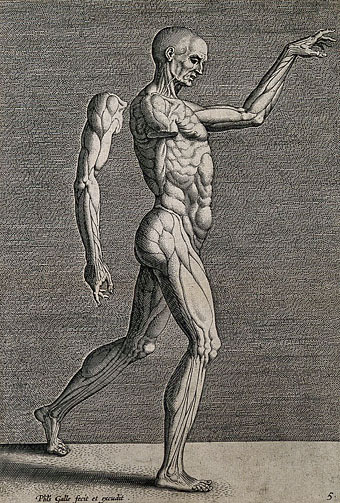
Engraving by Philip Galle.
Écorché, from the French verb to flay, was the traditional term applied to depictions of the skinless man found in anatomical studies, and the musculature models made for the use of artists and sculptors. This is almost always a male figure. Women tend to feature in the anatomical works of previous centuries in order to illustrate the conditions of pregnancy, the male body being considered the default for the usual sexist reasons.
I’ve been revisiting the history of these figures while working on a new book design so what follows are a few choice examples, some of which carry a pleasantly Surrealist charge. In the years that followed the pioneering studies by Vesalius and co. there was a period of playfulness in anatomical illustration during which time the figures are shown peeling away their flesh to reveal the muscles or even the organs beneath, a striptease where the substance of the body itself is removed. As William Burroughs was fond of quoting: “‘T ain’t no sin to take off your skin, and dance around in your bones.”
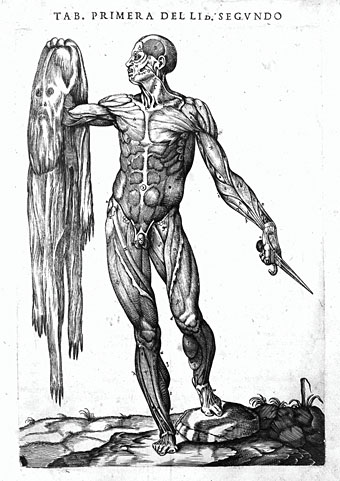
Valverde de Hamusco (1556).
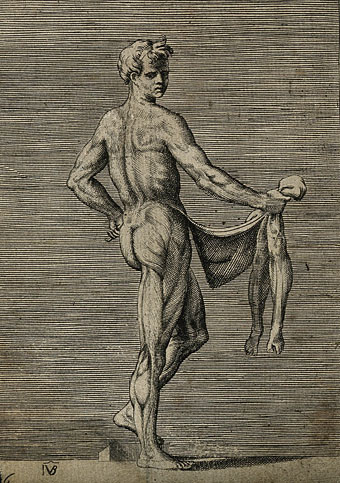
Engraving by G. Bonasone (15–).
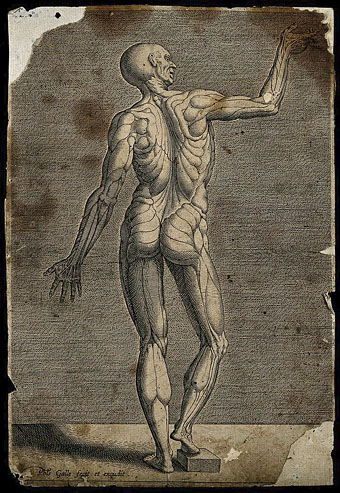
Engraving by Philip Galle.
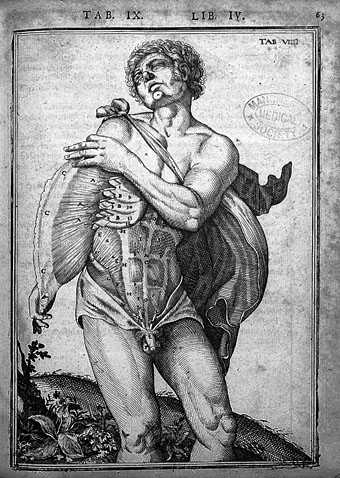
J. Casserius, Tabulae anatomicae (1627).
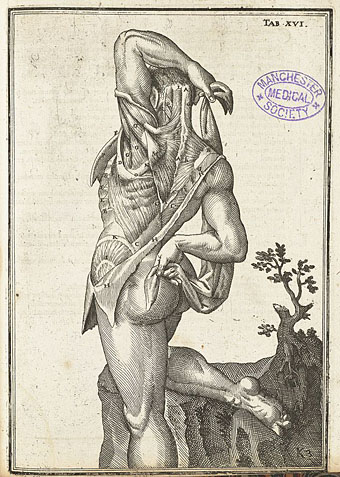
De humani corporis fabrica libri decem (1632).
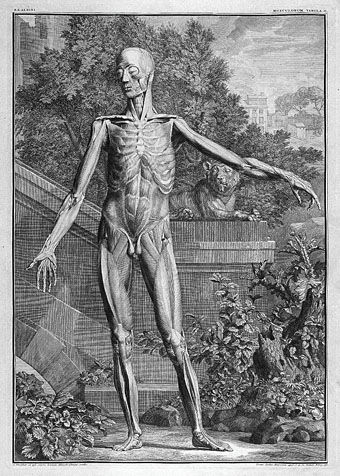
Tabulae sceleti et musculorum corporis humani (1749).
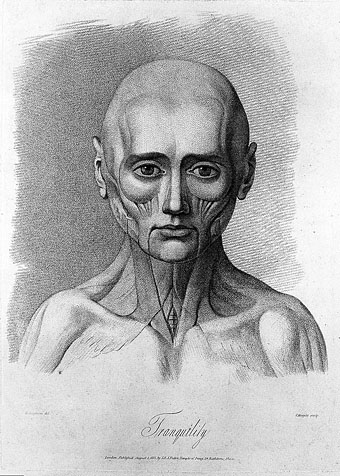
Tranquility; after George Stubbs (1815).
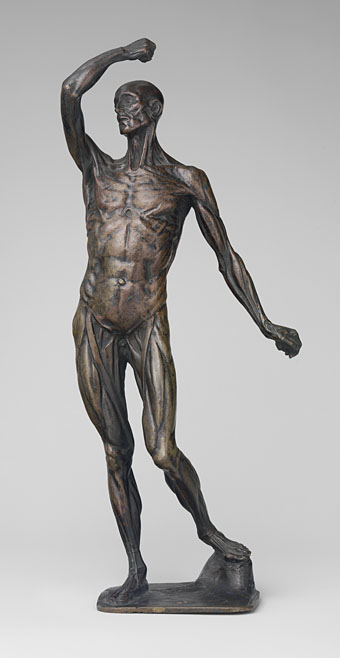
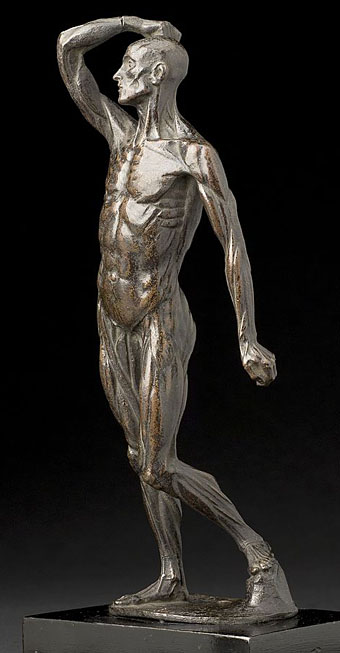
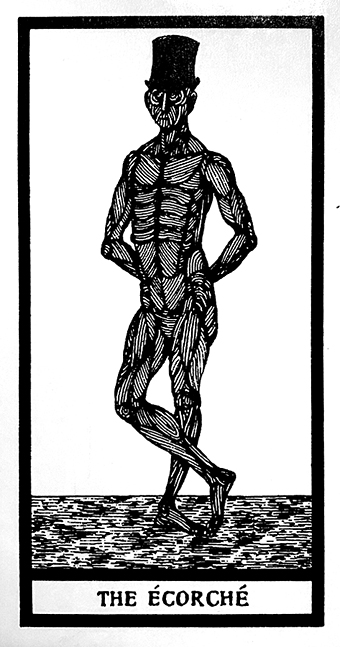
One of the cards from the Fantod Tarot deck (1966) by Edward Gorey.
Previously on { feuilleton }
• The etching and engraving archive

There is a very famous statue in Rome of a saint, I don’t know his name, carrying his skin as if it were a garment. He was flayed alive.
That would be Saint Bartholomew, he’s often depicted carrying his skin. This is a good statue of him:
https://commons.wikimedia.org/wiki/File:San_Bartolomeo_Scorticato.jpg